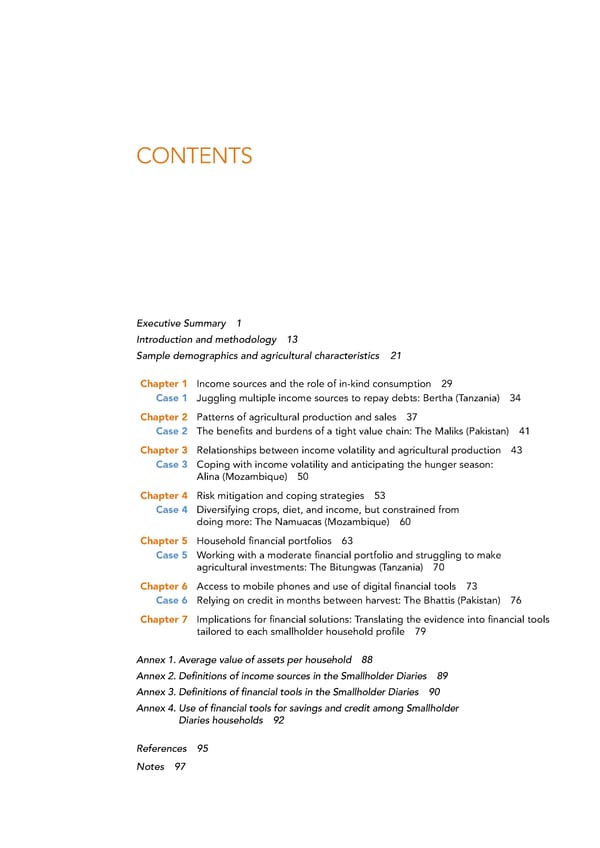CONTENTS Executive Summary 1 Introduction and methodology 13 Sample demographics and agricultural characteristics 21 Chapter 1 Income sources and the role of in-kind consumption 29 Case 1 Juggling multiple income sources to repay debts: Bertha (Tanzania) 34 Chapter 2 Patterns of agricultural production and sales 37 Case 2 The benefits and burdens of a tight value chain: The Maliks (Pakistan) 41 Chapter 3 Relationships between income volatility and agricultural production 43 Case 3 Coping with income volatility and anticipating the hunger season: Alina (Mozambique) 50 Chapter 4 Risk mitigation and coping strategies 53 Case 4 Diversifying crops, diet, and income, but constrained from doing more: The Namuacas (Mozambique) 60 Chapter 5 Household financial portfolios 63 Case 5 Working with a moderate financial portfolio and struggling to make agricultural investments: The Bitungwas (Tanzania) 70 Chapter 6 Access to mobile phones and use of digital financial tools 73 Case 6 Relying on credit in months between harvest: The Bhattis (Pakistan) 76 Chapter 7 Implications for financial solutions: Translating the evidence into financial tools tailored to each smallholder household profile 79 Annex 1. Average value of assets per household 88 Annex 2. Definitions of income sources in the Smallholder Diaries 89 Annex 3. Definitions of financial tools in the Smallholder Diaries 90 Annex 4. Use of financial tools for savings and credit among Smallholder Diaries households 92 References 95 Notes 97
 Financial Diaries with Smallholder Families Page 7 Page 9
Financial Diaries with Smallholder Families Page 7 Page 9